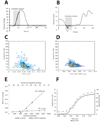Fluid-Structure Interactions of the Mitral Valve and Left Heart: Comprehensive Strategies, Past, Present and Future
- PMID: 20454531
- PMCID: PMC2864615
- DOI: 10.1002/cnm.1280
Fluid-Structure Interactions of the Mitral Valve and Left Heart: Comprehensive Strategies, Past, Present and Future
Abstract
The remodeling that occurs after a posterolateral myocardial infarction can alter mitral valve function by creating conformational abnormalities in the mitral annulus and in the posteromedial papillary muscle, leading to mitral regurgitation (MR). It is generally assumed that this remodeling is caused by a volume load and is mediated by an increase in diastolic wall stress. Thus, mitral regurgitation can be both the cause and effect of an abnormal cardiac stress environment. Computational modeling of ischemic MR and its surgical correction is attractive because it enables an examination of whether a given intervention addresses the correction of regurgitation (fluid-flow) at the cost of abnormal tissue stress. This is significant because the negative effects of an increased wall stress due to the intervention will only be evident over time. However, a meaningful fluid-structure interaction model of the left heart is not trivial; it requires a careful characterization of the in-vivo cardiac geometry, tissue parameterization though inverse analysis, a robust coupled solver that handles collapsing Lagrangian interfaces, automatic grid-generation algorithms that are capable of accurately discretizing the cardiac geometry, innovations in image analysis, competent and efficient constitutive models and an understanding of the spatial organization of tissue microstructure. In this manuscript, we profile our work toward a comprehensive fluid-structure interaction model of the left heart by reviewing our early work, presenting our current work and laying out our future work in four broad categories: data collection, geometry, fluid-structure interaction and validation.
Figures




















Similar articles
-
Mechanism of higher incidence of ischemic mitral regurgitation in patients with inferior myocardial infarction: quantitative analysis of left ventricular and mitral valve geometry in 103 patients with prior myocardial infarction.J Thorac Cardiovasc Surg. 2003 Jan;125(1):135-43. doi: 10.1067/mtc.2003.78. J Thorac Cardiovasc Surg. 2003. PMID: 12538997
-
Human Cardiac Function Simulator for the Optimal Design of a Novel Annuloplasty Ring with a Sub-valvular Element for Correction of Ischemic Mitral Regurgitation.Cardiovasc Eng Technol. 2015 Jun;6(2):105-16. doi: 10.1007/s13239-015-0216-z. Epub 2015 Feb 7. Cardiovasc Eng Technol. 2015. PMID: 25984248 Free PMC article.
-
Effects of cardiac resynchronization therapy after inferior myocardial infarction on secondary mitral regurgitation and mitral valve geometry.Pacing Clin Electrophysiol. 2018 Feb;41(2):114-121. doi: 10.1111/pace.13255. Epub 2018 Jan 16. Pacing Clin Electrophysiol. 2018. PMID: 29222864
-
Novel pathogenetic mechanisms and structural adaptations in ischemic mitral regurgitation.J Am Soc Echocardiogr. 2013 Oct;26(10):1107-1117. doi: 10.1016/j.echo.2013.07.003. Epub 2013 Aug 14. J Am Soc Echocardiogr. 2013. PMID: 23953703 Review.
-
Mitral valve surgery in patients with ischemic and nonischemic dilated cardiomyopathy.Cardiology. 2004;101(1-3):15-20. doi: 10.1159/000075981. Cardiology. 2004. PMID: 14988622 Review.
Cited by
-
An efficient algorithm for mapping imaging data to 3D unstructured grids in computational biomechanics.Int J Numer Method Biomed Eng. 2013 Jan;29(1):1-16. doi: 10.1002/cnm.2489. Epub 2012 May 16. Int J Numer Method Biomed Eng. 2013. PMID: 23293066 Free PMC article.
-
Computational mitral valve evaluation and potential clinical applications.Ann Biomed Eng. 2015 Jun;43(6):1348-62. doi: 10.1007/s10439-014-1094-5. Epub 2014 Aug 19. Ann Biomed Eng. 2015. PMID: 25134487 Free PMC article. Review.
-
A novel left heart simulator for the multi-modality characterization of native mitral valve geometry and fluid mechanics.Ann Biomed Eng. 2013 Feb;41(2):305-15. doi: 10.1007/s10439-012-0651-z. Epub 2012 Sep 11. Ann Biomed Eng. 2013. PMID: 22965640 Free PMC article.
-
Fluid-Structure Interaction Analysis of Ruptured Mitral Chordae Tendineae.Ann Biomed Eng. 2017 Mar;45(3):619-631. doi: 10.1007/s10439-016-1727-y. Epub 2016 Sep 13. Ann Biomed Eng. 2017. PMID: 27624659 Free PMC article.
-
A coupled sharp-interface immersed boundary-finite-element method for flow-structure interaction with application to human phonation.J Biomech Eng. 2010 Nov;132(11):111003. doi: 10.1115/1.4002587. J Biomech Eng. 2010. PMID: 21034144 Free PMC article.
References
-
- Peskin CS. Flow patterns around heart valves: a numerical method. J Comnp Phys. 1972;10:252–271.
-
- Cheng Y, Oertel H, Schenkel T. Fluid-structure coupled CFD simulation of the left ventricular flow during filling phase. Ann Biomed Eng. 2005;33(5):567–576. - PubMed
-
- Lemmon JD, Yoganathan AP. Three-dimensional computational model of left heart diastolic function with fluid-structure interaction. J Biomech Eng. 2000;122(2):109–117. - PubMed
-
- Redaelli A, Montevecchi FM. Computational evaluation of intraventricular pressure gradients based on a fluid-structure approach. J Biomech Eng. 1996;118(4):529–537. - PubMed
Grants and funding
LinkOut - more resources
Full Text Sources
Other Literature Sources
Miscellaneous
